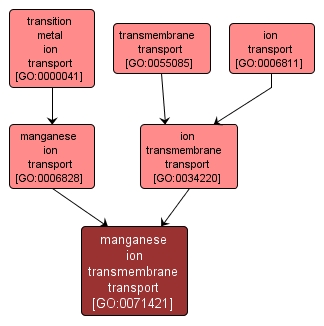GO TERM SUMMARY
|
| Name: |
manganese ion transmembrane transport |
| Acc: |
GO:0071421 |
| Aspect: |
Biological Process |
| Desc: |
A process whereby a manganese ion is transported from one side of a membrane to the other. |
Synonyms:
- transmembrane manganese transport
|
|

|
INTERACTIVE GO GRAPH
|














